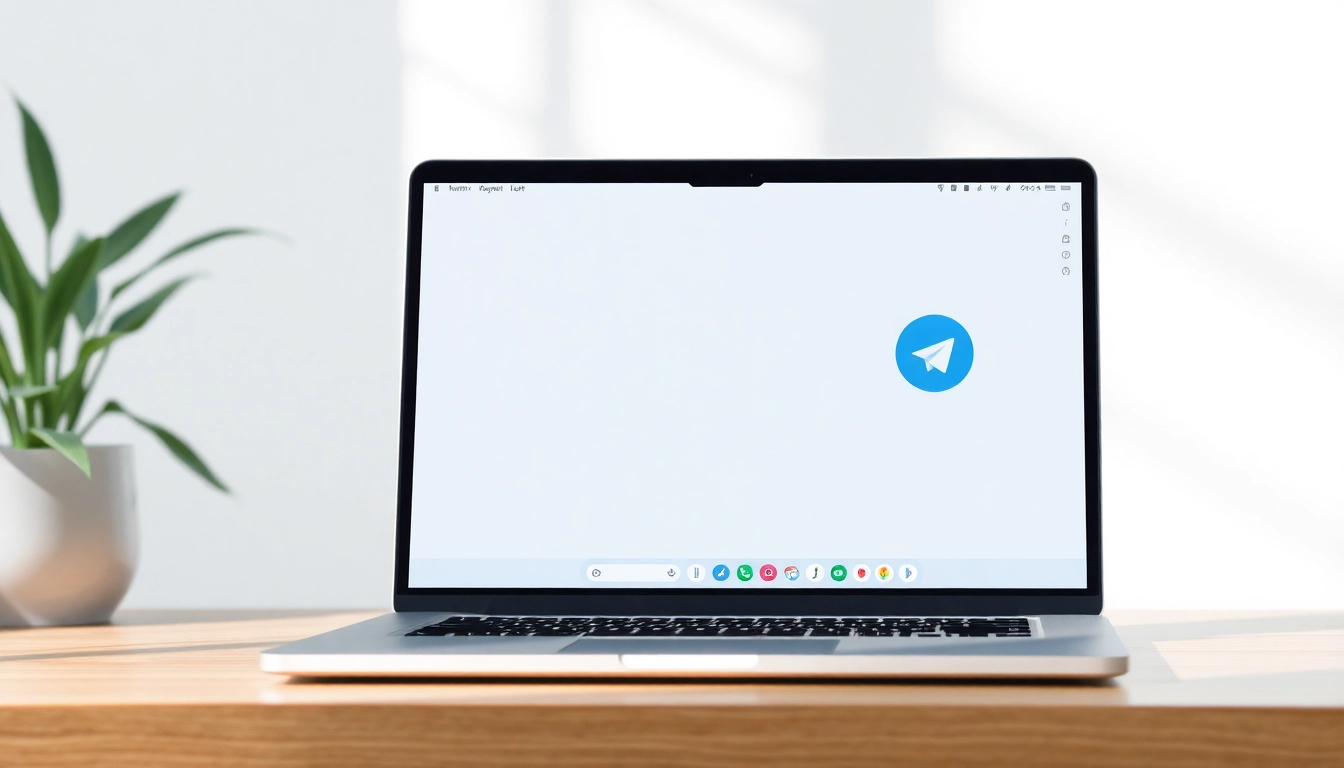Understanding the Need for Chatbot Testing Tools
As businesses increasingly turn to technology to enhance customer interactions, chatbots have emerged as critical tools in customer support, marketing, and user engagement. However, to ensure the effectiveness of these digital assistants, rigorous testing is essential. This is where Chatbot testing tools come into play, offering capabilities that help developers ensure chatbots perform as intended. In this section, we explore the significance of chatbots, define chatbot testing tools, and discuss the key benefits they offer while also addressing common challenges faced during the testing process.
Defining Chatbot Testing Tools
Chatbot testing tools are software solutions designed to assess the functionality, performance, and usability of chatbots. These tools can simulate user interactions and evaluate how effectively the chatbot responds to various inquiries, commands, and scenarios. Chatbot testing encompasses a range of methodologies, including automated testing, manual testing, functional testing, and performance testing, aimed at delivering a reliable and seamless user experience.
Key Benefits of Chatbot Testing Tools
Incorporating chatbot testing tools into the development and deployment process brings several advantages:
- Enhanced Performance: By identifying bugs and performance issues before deployment, testing tools ensure that chatbots function efficiently in real-world scenarios.
- Improved User Experience: Thorough testing allows businesses to fine-tune the conversational flow, making interactions more intuitive and satisfying for users.
- Operational Cost Savings: Early identification of issues through testing minimizes costly post-launch fixes, reducing the total cost of ownership for the chatbot.
- Increased Trust: A well-tested chatbot not only meets user expectations but also fosters trust in the brand’s commitment to quality and customer support.
Common Challenges in Chatbot Testing
Despite the benefits, testing chatbots can present various challenges:
- Complexity of Natural Language Processing: Chatbots need to understand various dialects, slangs, and user intents, which can complicate testing.
- Integration Issues: Chatbots often need to integrate with multiple systems and APIs, leading to potential complexity and issues in testing environments.
- Dynamic User Interactions: Unlike traditional software, user interactions with chatbots are unpredictable, making it challenging to create comprehensive test cases.
- Measuring Success: Identifying meaningful metrics to gauge success and user satisfaction can be more complex than standard application testing.
Types of Testing with Chatbot Testing Tools
Ensuring that a chatbot delivers optimal performance requires employing various testing methodologies. Each type of testing focuses on different aspects of the chatbot’s functionality, enabling developers to create a robust user experience.
Functional Testing Approaches
Functional testing verifies that a chatbot behaves as expected under various scenarios and user inputs. It includes:
- Conversational Flow Testing: This tests the logical progression of dialogues, ensuring that the bot can carry on a coherent conversation.
- Intent Recognition Testing: It assesses the bot’s ability to accurately parse user input and respond appropriately based on user intentions.
- Response Validation: This involves checking if the chatbot provides relevant and accurate answers to user queries aligned with its knowledge base.
Performance and Load Testing
Performance testing examines how a chatbot performs under various conditions, including high user load scenarios. Key components include:
- Stress Testing: Assessing the chatbot’s limits by simulating a high volume of concurrent users, helping identify bottlenecks.
- Response Time Testing: Measuring how quickly the chatbot responds to users is crucial for maintaining a positive user experience.
- Resource Utilization Testing: This tests how efficiently the chatbot utilizes system resources during normal and peak operations.
Security and Compliance Testing
Given the sensitive nature of potential user data collected by chatbots, security testing is an integral part of the chatbot testing process. This includes:
- Data Protection Compliance: Ensuring that the chatbot complies with data protection regulations, such as GDPR, to protect user information.
- Vulnerability Assessment: Identifying and mitigating security loopholes that may be exploited by malicious users.
- Authentication Testing: Verifying that secure authentication processes are in place for user interactions with the chatbot.
Choosing the Right Chatbot Testing Tools
When selecting a chatbot testing tool, several factors come into play that can determine the success of the testing process. Here, we detail key factors to consider.
Evaluating Features and Capabilities
Chatbot testing tools come with a variety of features that can enhance the testing lifecycle. Important features to evaluate include:
- Test Automation: A robust automation framework allows for repetitive tests to be conducted efficiently, saving time and resources.
- Integration Capabilities: Tools that easily integrate with popular development and testing frameworks are invaluable for streamlining workflows.
- Analytics and Reporting: Comprehensive analytics help in tracking the performance and issues encountered during tests, allowing for informed decision-making.
Comparing Pricing and Licensing Models
The cost of chatbot testing tools can vary significantly based on features, support, and deployment options. Here are some considerations:
- Budget Constraints: Understanding the budget available for testing tools is vital to narrow down suitable options.
- License Models: Many tools offer per-user, subscription-based, or one-time license plans—each with its own advantages and disadvantages.
- Scaling Costs: As your team grows or as chatbots evolve, reviewing any additional costs associated with scaling the tool is crucial.
User Reviews and Case Studies
Researching user reviews and case studies provides insights into real-world performance and utility. Key points to consider include:
- User-generated Feedback: Understanding the experiences of those using the tool can help paint a clearer picture of its effectiveness and reliability.
- Performance Metrics: Success stories that include measurable improvements can validate the efficacy of the tool for your specific needs.
- Support and Community: Engaging with the community around the tool can provide additional resources and troubleshooting, enhancing user experience.
Best Practices for Effective Chatbot Testing
To maximize the effectiveness of chatbot testing, implementing best practices can streamline processes and boost the quality of results. Below are essential practices to consider.
Creating a Comprehensive Testing Plan
A well-structured testing plan sets the foundation for successful chatbot evaluations. Components may include:
- Clear Objectives: Define what success looks like for the chatbot, including specific performance metrics and user satisfaction goals.
- Testing Scenarios: Develop a range of scenarios that simulate real user interactions to ensure diverse and comprehensive coverage.
- Documentation: Keeping detailed records of test cases, results, and issues encountered allows for continuous refinement and informs future testing.
Automating Testing Processes
Automations can greatly enhance efficiency in chatbot testing. Suggested steps include:
- Utilizing Scripts: Create automated scripts for repetitive tasks to save time and focus resources on more complex testing aspects.
- Scheduling Tests: Set regular tests to monitor chatbot performance over time, particularly post-deployment to catch any regressions early.
- Integrating Toolsets: Leverage integration capabilities with other test automation tools to ensure a holistic testing ecosystem.
Iterative Testing and Continuous Improvement
The chatbot landscape is constantly evolving, which necessitates an iterative approach to testing. Consider these strategies:
- Agile Methodologies: Apply agile testing principles, where testing is conducted in parallel with development for faster feedback loops.
- Regular Updates: Ensure that the chatbot and its testing tools are updated regularly to keep pace with technological advancements and changes in user behavior.
- User Feedback Incorporation: Actively collect and apply user feedback derived from interactions to shape and improve the chatbot experience.
Measuring Success and Impact of Chatbot Testing Tools
Ultimately, understanding the impact of chatbot testing is vital for continuous improvement. This involves defining and tracking key performance indicators (KPIs) that align with business objectives.
Key Performance Indicators (KPIs) to Track
Selecting the right KPIs to measure success can provide valuable insights. Consider the following indicators:
- Response Accuracy: Measure the percentage of correct responses given by the chatbot to assess its knowledge base and conversation handling capabilities.
- User Retention Rate: Tracking how often users return to interact with the chatbot can indicate overall satisfaction and usefulness.
- Resolution Rate: Assessing the percentage of queries successfully resolved by the chatbot can provide a clear picture of its effectiveness.
Analyzing User Feedback and Interactions
Understanding user feedback is essential for iterative improvements. Here are ways to leverage feedback:
- Surveys and Feedback Forms: Use post-interaction surveys to gather qualitative data on user experiences and suggestions.
- Interaction Analysis: Regularly review recorded interactions to identify pain points or areas for enhancement in conversational flow.
- Behavior Analytics: Utilizing analytics tools helps in understanding how users navigate conversations and where drop-offs occur.
Improving User Experience with Insights from Testing
Incorporating testing insights can enhance user experiences significantly. Consider these enhancements:
- Adjusting Responses: Use insights to improve or expand the knowledge base, ensuring that responses are up-to-date and relevant.
- Refining User Paths: Optimize the conversational flow based on interaction patterns, making it easier for users to find the information they seek.
- Regular Updates: Continually implement improvements in response logic and information based on user interactions and feedback.



